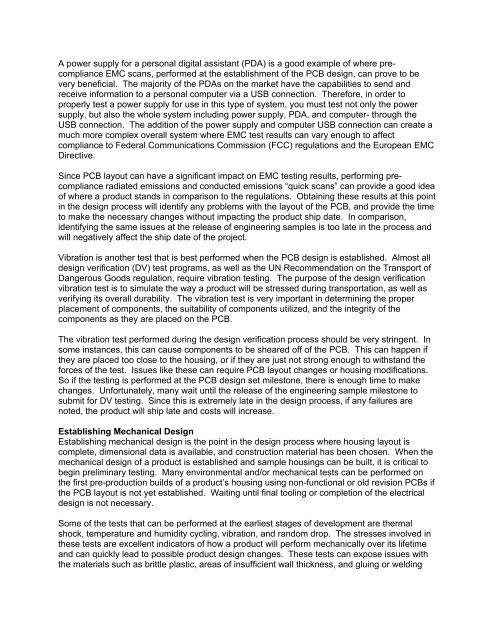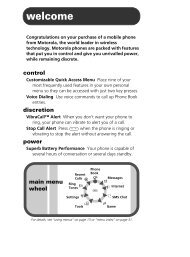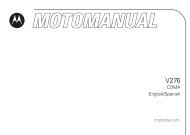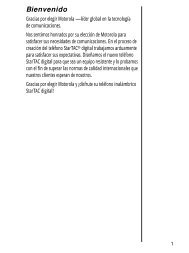Identifying electrical and mechanical design milestones is very ...
Identifying electrical and mechanical design milestones is very ...
Identifying electrical and mechanical design milestones is very ...
Create successful ePaper yourself
Turn your PDF publications into a flip-book with our unique Google optimized e-Paper software.
A power supply for a personal digital ass<strong>is</strong>tant (PDA) <strong>is</strong> a good example of where precompliance<br />
EMC scans, performed at the establ<strong>is</strong>hment of the PCB <strong>design</strong>, can prove to be<br />
<strong>very</strong> beneficial. The majority of the PDAs on the market have the capabilities to send <strong>and</strong><br />
receive information to a personal computer via a USB connection. Therefore, in order to<br />
properly test a power supply for use in th<strong>is</strong> type of system, you must test not only the power<br />
supply, but also the whole system including power supply, PDA, <strong>and</strong> computer- through the<br />
USB connection. The addition of the power supply <strong>and</strong> computer USB connection can create a<br />
much more complex overall system where EMC test results can vary enough to affect<br />
compliance to Federal Communications Comm<strong>is</strong>sion (FCC) regulations <strong>and</strong> the European EMC<br />
Directive.<br />
Since PCB layout can have a significant impact on EMC testing results, performing precompliance<br />
radiated em<strong>is</strong>sions <strong>and</strong> conducted em<strong>is</strong>sions “quick scans” can provide a good idea<br />
of where a product st<strong>and</strong>s in compar<strong>is</strong>on to the regulations. Obtaining these results at th<strong>is</strong> point<br />
in the <strong>design</strong> process will identify any problems with the layout of the PCB, <strong>and</strong> provide the time<br />
to make the necessary changes without impacting the product ship date. In compar<strong>is</strong>on,<br />
identifying the same <strong>is</strong>sues at the release of engineering samples <strong>is</strong> too late in the process <strong>and</strong><br />
will negatively affect the ship date of the project.<br />
Vibration <strong>is</strong> another test that <strong>is</strong> best performed when the PCB <strong>design</strong> <strong>is</strong> establ<strong>is</strong>hed. Almost all<br />
<strong>design</strong> verification (DV) test programs, as well as the UN Recommendation on the Transport of<br />
Dangerous Goods regulation, require vibration testing. The purpose of the <strong>design</strong> verification<br />
vibration test <strong>is</strong> to simulate the way a product will be stressed during transportation, as well as<br />
verifying its overall durability. The vibration test <strong>is</strong> <strong>very</strong> important in determining the proper<br />
placement of components, the suitability of components utilized, <strong>and</strong> the integrity of the<br />
components as they are placed on the PCB.<br />
The vibration test performed during the <strong>design</strong> verification process should be <strong>very</strong> stringent. In<br />
some instances, th<strong>is</strong> can cause components to be sheared off of the PCB. Th<strong>is</strong> can happen if<br />
they are placed too close to the housing, or if they are just not strong enough to withst<strong>and</strong> the<br />
forces of the test. Issues like these can require PCB layout changes or housing modifications.<br />
So if the testing <strong>is</strong> performed at the PCB <strong>design</strong> set milestone, there <strong>is</strong> enough time to make<br />
changes. Unfortunately, many wait until the release of the engineering sample milestone to<br />
submit for DV testing. Since th<strong>is</strong> <strong>is</strong> extremely late in the <strong>design</strong> process, if any failures are<br />
noted, the product will ship late <strong>and</strong> costs will increase.<br />
Establ<strong>is</strong>hing Mechanical Design<br />
Establ<strong>is</strong>hing <strong>mechanical</strong> <strong>design</strong> <strong>is</strong> the point in the <strong>design</strong> process where housing layout <strong>is</strong><br />
complete, dimensional data <strong>is</strong> available, <strong>and</strong> construction material has been chosen. When the<br />
<strong>mechanical</strong> <strong>design</strong> of a product <strong>is</strong> establ<strong>is</strong>hed <strong>and</strong> sample housings can be built, it <strong>is</strong> critical to<br />
begin preliminary testing. Many environmental <strong>and</strong>/or <strong>mechanical</strong> tests can be performed on<br />
the first pre-production builds of a product’s housing using non-functional or old rev<strong>is</strong>ion PCBs if<br />
the PCB layout <strong>is</strong> not yet establ<strong>is</strong>hed. Waiting until final tooling or completion of the <strong>electrical</strong><br />
<strong>design</strong> <strong>is</strong> not necessary.<br />
Some of the tests that can be performed at the earliest stages of development are thermal<br />
shock, temperature <strong>and</strong> humidity cycling, vibration, <strong>and</strong> r<strong>and</strong>om drop. The stresses involved in<br />
these tests are excellent indicators of how a product will perform <strong>mechanical</strong>ly over its lifetime<br />
<strong>and</strong> can quickly lead to possible product <strong>design</strong> changes. These tests can expose <strong>is</strong>sues with<br />
the materials such as brittle plastic, areas of insufficient wall thickness, <strong>and</strong> gluing or welding










